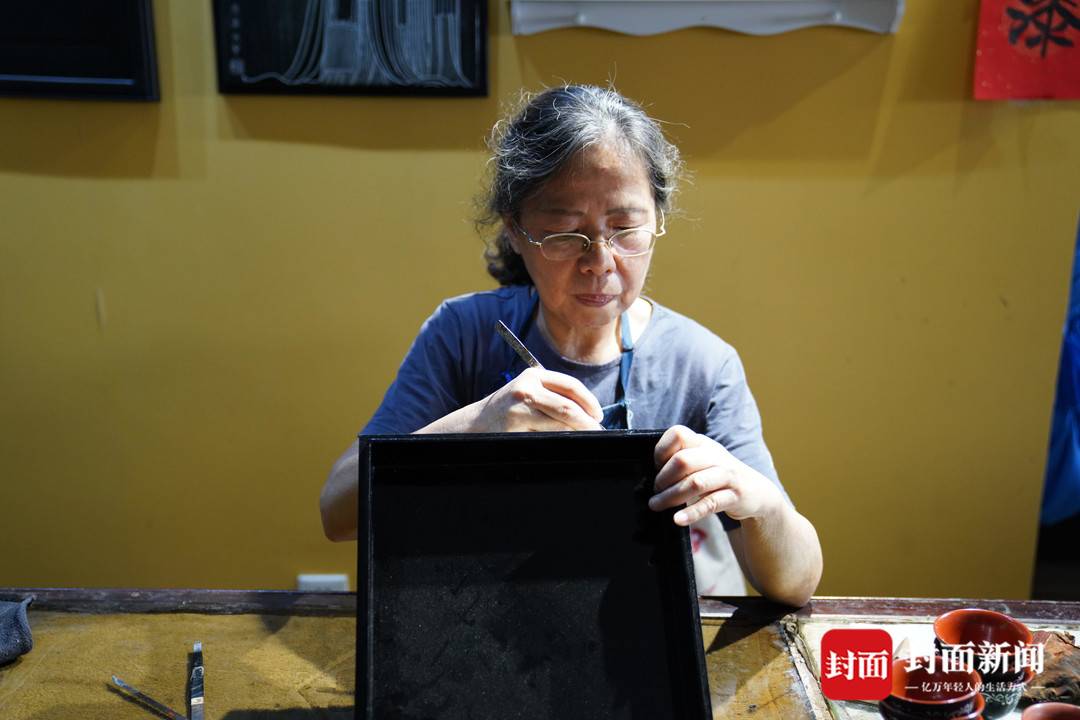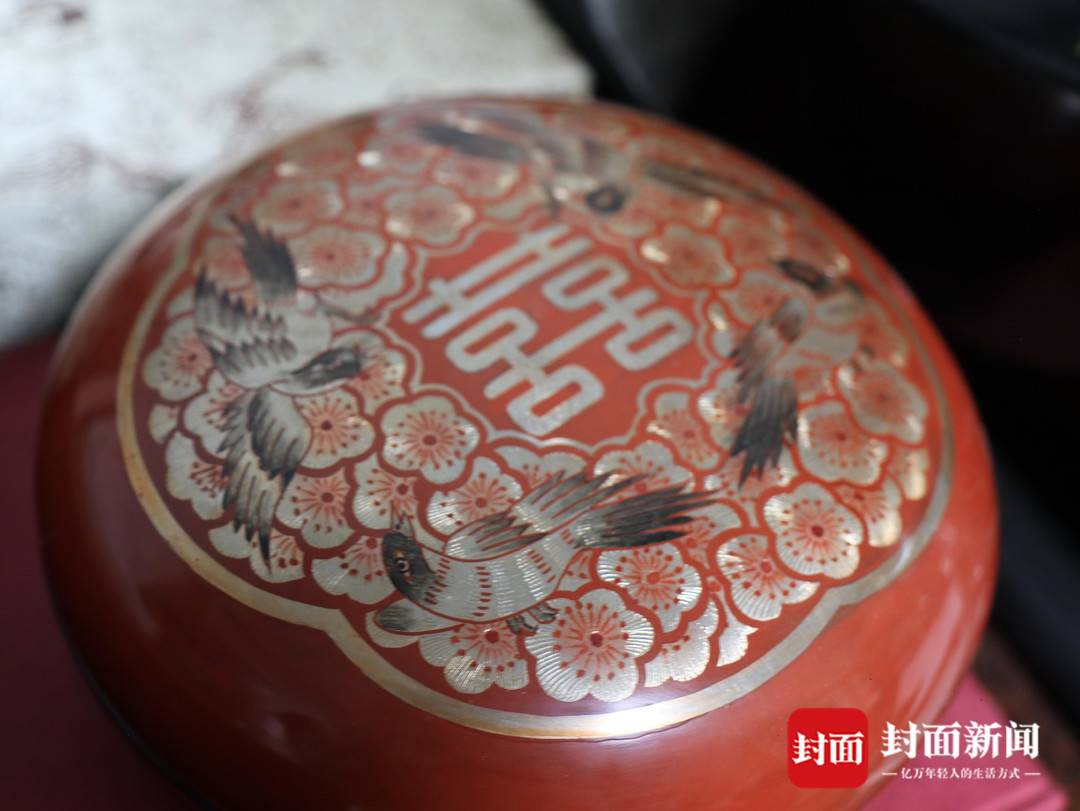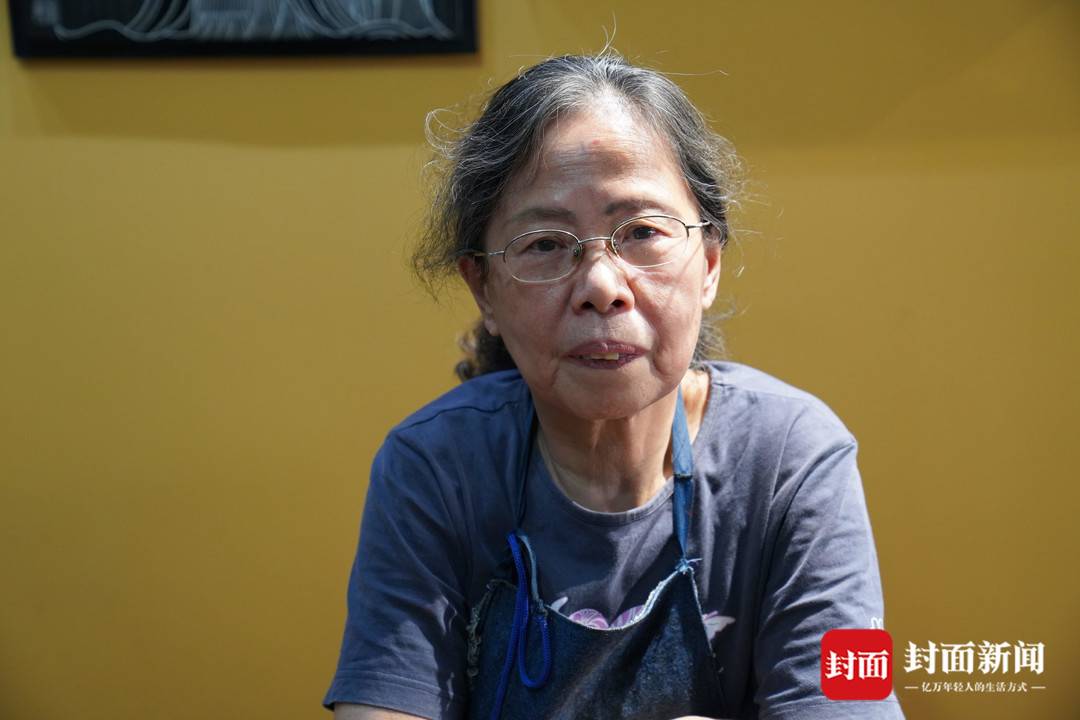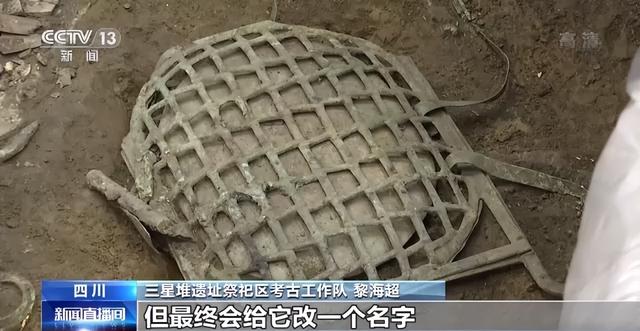Ingenuity | Song Xiping's "Lacquer Arts Life" ⑥: Chengdu has a sour studio for thousands of years.
Author:Cover news Time:2022.07.03

Song Xiping
Cover reporter Liu Kexin Li Yuxin Intern Wang Zhuo
In 1972, there were hundreds of lacquer wares unearthed from the cultural relics unearthed in Changsha, Hunan. These blacklands Zhu painting, Zhu Di black color, "gold inlaid and silver" lacquerware, small to daily vector, as large as ritual, different uses. They have experienced the baptism of thousands of years, but they are still bright and bright.
On one of the lacquer with wood as a tire, the faintly visible "Chengshi Grass" reveals the origin of this lacquerware. It comes from Chengdu, a famous lacquerware production center in the Han Dynasty. In Chengdu today, some people are still inheriting the production process of lacquerware. In May 2022, the cover reporter stepped into the studio of Song Xiping, a representative inheritor of Chengdu Lacquer Art in the national non -heritage project.
As soon as I entered the door, a sour strange taste came. Don't nose, not bad, just make people wonder where this taste never smelled. There are four exhibition frames near the gate, which are full of wooden tires that are not even bottomed with bottom paint, and half -finished paint -decorated lacquerware. Four or five members in the studio are busy each other, and they are not speechless. The reporter sat down with Song Xiping in the studio to learn about Chengdu's lacquer art. This continued thousands of years.

The lacquerware produced by Song Xiping Studio
The lacquerware of the power of 100 people and the merits of 10,000 people
How to come from hundreds of processes
"A cup of volumes with the power of 100 people, a screen is the work of 10,000 people." The tedious craftsmanship of the lacquerware makes it high in ancient times, and thus becomes exclusive to the nobles of the princes. Song Xiping introduced that the production technology of Chengdu lacquerware is as high as dozens or even hundreds of ways. As small as chopsticks, coffee cups, as large as heavy weapons such as makeup and vases, a process is indispensable. "In the past, we have done statistics in our lacquerware factory, at least the seventy -two procedures. Because the quality of lacquerware production is relatively high now, there may be more than 72 roads, and we even have to do hundreds of ways."
Design, wooden tires, lacquer workers, polishing, decoration, lighting, polishing, conventional lacquerware production processes include these processes. Each process includes more detailed process classification and multiple repeated production. "We need to brush the made wood tires with thick lacquer ash and make paint tires. This process takes three to five times. We must polish each time, and the last one is water grinding. In order to go to the bottom paint. The bottom paint is decorated with the raw paint that is made of sun -exposed. The process includes several types of decorative techniques such as carving, painting, embedded, and pile. Each technique contains a lot of details. This is how these dozens and hundreds of processes come, "Song Xiping introduced. The process of a lacquerware is at least a hundred days, and some even have a few years. This must be determined according to its size and process requirements. "
One of the decorative steps includes the most exquisite carving lottery in Chengdu lacquer art, which is also Song Xiping's masterpiece. "The lacquerware craftsmanship from all over the country is different. In the past, our Chengdu lacquerware was characterized by carving. Of course, Chengdu lacquerware is not limited to carving, but only carved." Song Xiping introduced. "Our Chengdu lacquerware The decorative techniques are all inclusive, carved, hidden flowers, painted, inlaid, paint, pile paint, puppet painting, and gold drawing. Because when we were studying lacquer art, art teachers from all over the country brought about the characteristics of the craftsmanship in various places. "

Song Xiping
In 1972, when Song Xiping first entered the Chengdu Lacquer Water Factory, he was mainly responsible for the carving process. "It has been carved for six or seven years in a row. After 1978, with new materials such as tin tablets, I can draw some paintings on the decoration. Therefore, the basic skills on my hand are still relatively solid, and the carved things are more popular."
When it comes to Chengdu lacquerware, the most representative craftsmanship is "three carvings". Song Xiping said that "three carvings" are lacquer carving, lacquer hidden flowers, and carved paint; "'A moment' is a very traditional craft. There was a needle carving process in the Han Dynasty more than 2,000 years ago. We are called 戗“, and Japan is called Shen Jin or Shen Jin. "But there are very few people who can do the carving craftsmanship now. Only those who can achieve the master level can do it. We are also constantly taught young people, hoping to retain this skill."

Song Xiping's works
The sour fragrance is the taste of "blood"
The lacquerware goes with people, ten people and ten people
During the interview, Song Xiping has always emphasized that the lacquerware produced by his studio is made of natural paint. Perhaps from Song Xiping's view, this is the persistence of as a craftsman and an ingenious manifestation. "The spirit of craftsmen is a strong sense of responsibility and must not be sloppy. This is indeed reflected in the craftsmanship of our paint." Song Xiping said.
"Sichuan is a place for production of lacquer. Many of the surrounding altitudes are not very high, and they are suitable for the growth of lacquer trees." Paint trees, this plant that grows from 800 to 3,000 meters, backwinds, and wet hillside forests is raw lacquer. source.
"Every year when you reach Sanfu Tian, you have to go up the mountain to cut the lacquer tree. Like cutting rubber, two mouths are drawn on the tree, and the liquid flowing out in it is raw paint. Only this liquid on the lacquer tree. It passes through the air. It passes through the air. The oxidation of oxidation is very thick. We call the conjunctiva and it will be hard after drying. We will use carving and polishing. Raw paint is considered a good paint thousands of years ago. Use this material. "But the paint tree is also known as the" bite tree ", because its whole body contains paintol. Once it touches the skin, it will cause burning and itching allergic reactions. Song Xiping has also experienced this level. When I first came into contact with raw paint, Song Xiping's hands, arms, necks, and faces were allergic, full of lacquer dumplings. The hands and face will swell, and the face is even swollen with only one seam. Once the itchy skin is scratched, it will flow yellow water. Song Xiping said that until now, he could not completely get rid of the allergic reactions caused by the paint. As soon as spring, when the skin is exposed to paint, it will still itch. Even so, Song Xiping insisted on the refining, sun -made paint, coating paint, and paint. "My paint has never been bought casually on the street. The paint bought outside does not know what added inside, which will affect its quality. Only the best paint can make the best thing."
Song Xiping told reporters that the method of identifying excellent paint is heard, and the other is to see. "Good raw paint is a kind of sour flavor. The second is to look at the color of raw paint. The raw paint just cut off is milky white, and it will turn dark brown immediately after seeing the air. The faster the color, the better the dryness. The better the paint, the shorter the production cycle. "The moment you stepped into Song Xiping's studio, the taste that could not be lingering was the taste of raw paint. This taste will gradually dissipate with the processes such as dryness. Only those who make lacquer wares from scratch have a chance to smell the taste.
But not all the painted paint is well painted. After the 1980s, chemical paint gradually entered the field of lacquerware production. The chemical paint is dry and fast, and several processes can be completed a day. In terms of efficiency, "leading" has too many raw paint. But at the same time, chemical paint contains a lot of harmful ingredients to the human body, which causes it to become a raw material for lacquerware related to people. "Raw lacquer is a very precious resource. Japan calls the raw lacquer as" God's Blood ". This is a gift from nature to human beings. Human persistence is also her personal work concept.
Song Xiping

In addition to the precious raw materials, the process of time and consumption also determines the price of lacquerware.
It takes about half a year to eat a paint bowl for dinner. A small piece of work takes more than 3 months. The large -scale works with complicated craftsmanship have been produced for at least one year. "The rework rate of the lacquerware is quite high, basically about 20%. If the person with a strong sense of responsibility is better, it is better to do it. If you are used to it, it is not a problem. Go, it is different, and ten people do different. "
Therefore, Song Xiping Studio is still unwilling to accept too large orders, and it is also the principle of being responsible for the quality of the lacquerware.
In 50 years in the lacquerware industry, Song Xiping's works have entered the ranks of the collection of museums such as the National Museum, Shanghai Museum and other museums. Buyers from all over the country also scrambled to collect her lacquerware for her fine carving and responsible attitude. In the process of countless paint and carving, Song Xiping's perception of skills and lack of skills became clearer.
"The skills must be continuously improved, and my current lacquerware is getting more and more refined. The lacquerware always lives to be old, learns to be old, and I still have to learn it after I was old. But I also saw a lot of foreign lacquer wares. It is very well in place. So we must do all the aspects of the process well, and achieve the extreme on the three standards of 'flat, light, and bright'. "Song Xiping said.

- END -
The archeological excavation of the Sanxingdui site has achieved remarkable results in the near future: No. 7 pit excavations are excavated near the end, and the unearthed cultural relics are surprised.

The archeological excavation of Sanxingdui sites in this round has achieved remark...
Lylum textbook delete Lu Xun's work?Human Education Society response
